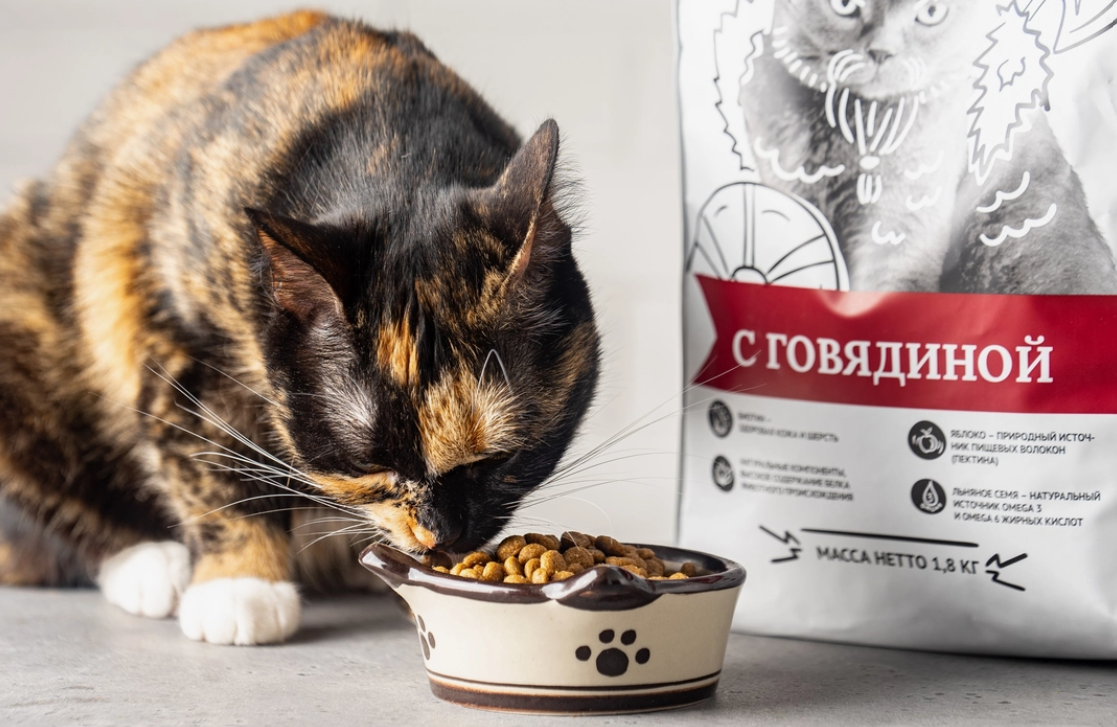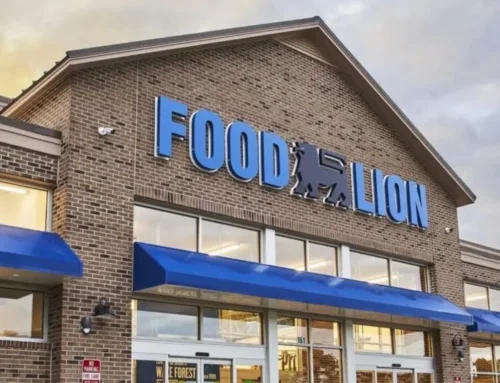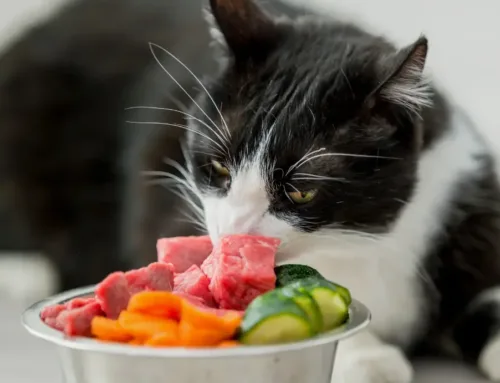Welcome to our comprehensive guide on soft dry cat food. This type of cat food offers a unique balance between the crunchiness of dry kibble and the tenderness of wet food, making it an ideal choice for many cat owners. In this guide, we will delve into the benefits, nutritional aspects, selection criteria, transitioning tips, and much more regarding Soft Dry Cat Food. Whether you’re a seasoned cat parent or considering a dietary switch for your feline friend, this guide will provide valuable insights.

What is Soft Dry Cat Food?
Definition and Characteristics
Soft dry cat food, also known as semi-moist cat food, combines elements of both dry and wet cat food. It typically contains 10-20% moisture, compared to the 6-10% in dry kibble and 70-80% in wet food. This increased moisture content results in a softer texture, which can be easier for cats to chew and digest.
Why Choose Soft Dry Cat Food?
Soft dry cat food offers several advantages:
- Texture: Cats with dental issues or older cats with missing teeth find it easier to eat.
- Flavor: Many cats prefer the taste and texture over traditional kibble.
- Convenience: It doesn’t require refrigeration like wet food and has a longer shelf life than wet food.
Nutritional Benefits of Soft Dry Cat Food
Balanced Nutrition
High-quality soft dry cat food is designed to provide a balanced diet, offering a mix of proteins, fats, carbohydrates, vitamins, and minerals. Real meat is often the primary ingredient, ensuring your cat receives the necessary protein for muscle maintenance and overall health.
Hydration
Soft dry cat food offers more moisture than traditional kibble, which can benefit cats that do not drink enough water on their own. Proper hydration is essential for overall health, including kidney function and urinary health.
Digestibility
The softer texture of this food type can be easier on your cat’s digestive system. This is particularly beneficial for cats with sensitive stomachs or digestive issues, making it easier for them to break down and absorb nutrients.
How to Choose the Right Soft Dry Cat Food
Ingredient Quality
Always check the ingredient list when selecting soft dry cat food. Look for foods where high-quality proteins (like chicken, turkey, or fish) are listed as the first ingredients. Avoid foods with excessive fillers like corn, wheat, or soy, as these can be harder for cats to digest and may cause allergies.
Nutritional Balance
Ensure the food is balanced and complete, meeting the nutritional standards set by organizations such as the Association of American Feed Control Officials (AAFCO). This means the food contains all the essential nutrients in the right proportions to support your cat’s health.
Special Dietary Needs
Consider any special dietary needs your cat may have. Some cats require grain-free diets, while others may need food formulated for weight management, urinary health, or other specific conditions. Consult with your veterinarian to choose the best option for your cat’s unique needs.
Transitioning to Soft Dry Cat Food
Gradual Introduction
Switching your cat’s food should be done gradually to avoid digestive upset. Start by mixing a small amount of the new soft dry cat food with their current food, gradually increasing the amount over a week or two. This slow transition helps your cat adjust to the new food without causing stomach issues.
Monitoring
Keep an eye on your cat’s reaction to the new food. Watch for any signs of digestive issues, allergies, or changes in appetite or behavior. If you notice any adverse reactions, consult your veterinarian. Monitoring your cat during the transition period ensures they adapt well to the new diet.
Feeding Guidelines
Portion Control
Follow the feeding guidelines provided on the packaging of the soft dry cat food. These guidelines are based on your cat’s weight, age, and activity level. It’s important not to overfeed or underfeed your cat to maintain a healthy weight. Proper portion control is crucial for preventing obesity and ensuring your cat gets the right amount of nutrients.
Regular Feeding Schedule
Establish a regular feeding schedule. Cats thrive on routine, and feeding them at the same times each day can help regulate their digestion and prevent overeating. Consistency in feeding times also helps manage their energy levels and behavior.
Common Myths About Soft Dry Cat Food
Myth 1: Soft Dry Cat Food Causes Dental Issues
Some believe that soft dry cat food can contribute to dental problems because it doesn’t provide the same abrasive action as dry kibble. However, the key to dental health is regular dental care, including brushing your cat’s teeth and providing dental treats or toys. Ensuring your cat has good oral hygiene practices is more important than the texture of their food.
Myth 2: Soft Dry Cat Food is Not Nutritionally Complete
High-quality soft dry cat food is formulated to be nutritionally complete, providing all the essential nutrients your cat needs. Always choose reputable brands that meet established nutritional standards to ensure your cat’s diet is balanced and healthy.
Myth 3: All Soft Dry Cat Foods Are the Same
Not all soft dry cat foods are created equal. Ingredient quality, nutritional balance, and specific formulations can vary greatly between brands. Always read labels and choose the best option for your cat’s needs. Researching and selecting the right food ensures your cat receives optimal nutrition.
Benefits of Soft Dry Cat Food for Senior Cats
Easier to Chew
As cats age, they may develop dental issues that make chewing dry kibble difficult. The softer texture of soft dry cat food can be much easier for senior cats to chew and enjoy, ensuring they get the nutrition they need without discomfort.
Enhanced Palatability
Older cats can sometimes become picky eaters. The enhanced flavor and texture of soft dry cat food can make it more appealing to senior cats, encouraging them to eat more and maintain a healthy weight. This is particularly important for ensuring they receive adequate nutrition in their later years.
Improved Hydration
Senior cats are more prone to dehydration. The higher moisture content in soft dry cat food can help keep them hydrated, supporting overall health and kidney function. Adequate hydration is crucial for maintaining their quality of life and preventing health issues.
Making Soft Dry Cat Food at Home
Basic Recipe
If you prefer homemade cat food, you can make soft dry cat food at home. Here’s a basic recipe to get you started:
Ingredients:
- 1 cup cooked chicken, shredded
- 1/2 cup cooked rice
- 1/2 cup chicken broth (low sodium)
- 1/4 cup grated carrots
- 1 tablespoon olive oil
Instructions:
- Mix all ingredients in a large bowl until well combined.
- Form into small, bite-sized pieces.
- Bake at 350°F for 15-20 minutes, until firm but not hard.
- Let cool completely before serving.
Nutritional Considerations
When making homemade cat food, it’s crucial to ensure it meets your cat’s nutritional needs. Consult with your veterinarian or a pet nutritionist to make sure your homemade diet is balanced and complete. Homemade diets can be a great option, but they require careful planning to ensure they provide all necessary nutrients.
Soft Dry Cat Food for Kittens
Nutritional Needs of Kittens
Kittens have different nutritional needs than adult cats. They require more protein, fat, and certain vitamins and minerals to support their rapid growth and development. Ensuring they receive adequate nutrition during this crucial stage sets the foundation for a healthy life.
Choosing the Right Food
Select a soft dry cat food specifically formulated for kittens. These foods are designed to provide the higher levels of nutrients that kittens need to grow and thrive. Look for foods that support bone development, muscle growth, and immune system health.
Transitioning Kittens to Adult Food
Around one year of age, you can start transitioning your kitten to adult cat food. Gradually mix the adult food with the kitten food over several weeks to make the transition smooth. This gradual shift helps avoid digestive upset and ensures your cat adjusts well to their new diet.
Addressing Common Health Concerns with Soft Dry Cat Food
Urinary Health
Some soft dry cat foods are formulated to support urinary health. These foods typically have controlled levels of minerals like magnesium and phosphorus to prevent urinary crystals and stones. Maintaining urinary health is crucial for preventing discomfort and serious health issues.
Weight Management
If your cat is overweight, consider a soft dry cat food formulated for weight management. These foods have lower calorie content and added fiber to help your cat feel full while reducing caloric intake. Proper weight management is essential for preventing obesity-related health issues.
Allergies and Sensitivities
If your cat has food allergies or sensitivities, look for hypoallergenic or limited ingredient soft dry cat food. These foods are designed to minimize the risk of allergic reactions and digestive issues. Identifying and avoiding allergens helps maintain your cat’s overall health and comfort.
Storing Soft Dry Cat Food
Proper Storage
To keep soft dry cat food fresh, store it in an airtight container in a cool, dry place. Avoid exposure to heat and moisture, which can cause the food to spoil. Proper storage ensures the food remains fresh and nutritious.
Shelf Life
Check the expiration date on the packaging and use the food within the recommended timeframe. Soft dry cat food typically has a longer shelf life than wet food but should still be used before it expires. Using fresh food ensures your cat receives optimal nutrition and avoids potential health issues.
Environmental Impact of Soft Dry Cat Food
Sustainable Ingredients
Many cat food brands are now focusing on sustainability. Look for soft dry cat foods made with sustainably sourced ingredients and eco-friendly packaging. Supporting sustainable practices helps reduce environmental impact and promotes the well-being of our planet.
Reducing Waste
Soft dry cat food generates less waste compared to wet food cans and pouches. The packaging is often recyclable, helping to reduce your environmental footprint.
Conclusion
Soft dry cat food offers a unique and beneficial option for feeding your feline friend. Combining the best aspects of dry kibble and wet food, it provides a balanced diet with enhanced texture and flavor that many cats find irresistible. The higher moisture content aids in hydration, and the softer texture makes it easier to chew and digest, particularly for senior cats and those with dental issues.
Choosing the right soft dry cat food involves careful consideration of ingredient quality, nutritional balance, and your cat’s specific dietary needs. Gradual transitioning is crucial to avoid digestive issues, and maintaining a regular feeding schedule ensures your cat’s dietary routine is consistent.





Leave A Comment